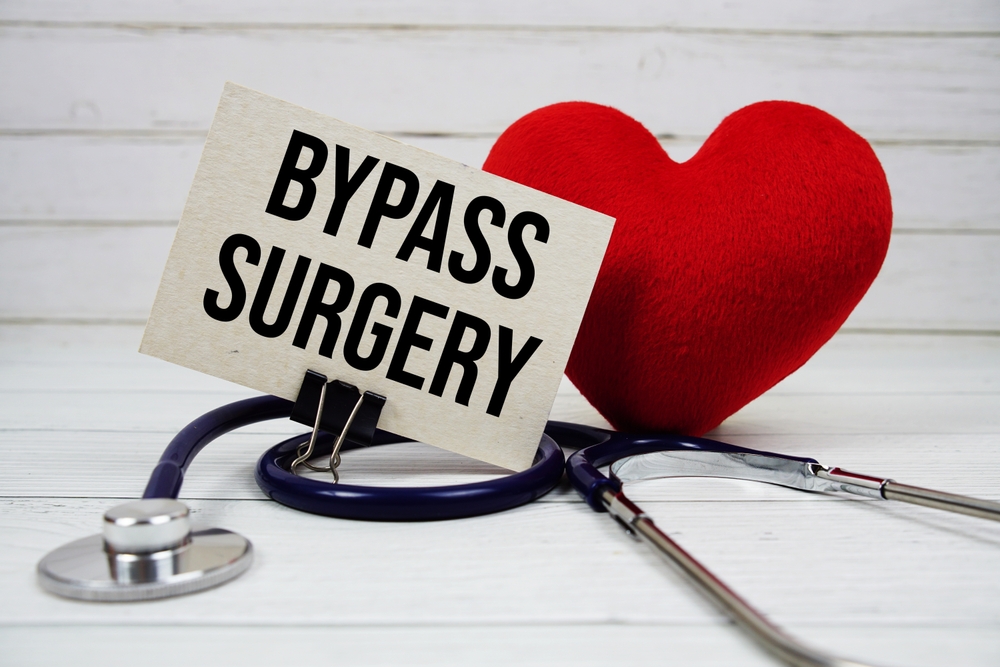Mark Kopec Now
Heart Bypass
Medical Malpractice and (Heart) Coronary Artery Bypass Grafting (CABG): A Legal and Medical Analysis
Coronary Artery Bypass Grafting (CABG) is commonly referred to as heart bypass is a type of heart surgery. It is a procedure in the treatment of advanced coronary artery disease (CAD). It is often a life-saving intervention, and restores vital blood flow to the heart muscle (myocardium) circumventing atherosclerotic blockages. Due to its complexity, the high stakes involved, and the intricate care pathway, heart bypass procedures are looked at in medical malpractice cases. Understanding the medical standard of care, the history of heart bypass, and the common errors that breach that standard is essential for both legal and medical professionals.
1. The History and Evolution of Coronary Artery Bypass Grafting
The concept of revascularizing the heart muscle is over a century old. Early experimental work traces back to Alexis Carrel in 1910. However, the modern CABG procedure evolved through the efforts of several 20th-century pioneers.
Early techniques, such as the Vineberg Procedure in the 1940s, involved placing the internal thoracic artery (ITA) directly into the heart muscle to promote collateral circulation, offering symptom relief but lacking the direct bypass approach. The true breakthrough for CABG, as we know it today, is frequently credited to the work of Dr. René Favaloro at the Cleveland Clinic. In 1967, Favaloro successfully performed the first systematic CABG using the saphenous vein from the leg as a conduit to bypass a blocked coronary artery. Contemporaneous and parallel work by Russian surgeon Vasilii Kolesov also showed successful direct anastomosis of the internal mammary artery (IMA) to the coronary artery without the use of a heart-lung machine in 1964.
Today, the use of the Left Internal Thoracic Artery (LITA) grafted to the Left Anterior Descending (LAD) coronary artery is considered the gold standard. This is due to its superior long-term patency rate compared to saphenous vein grafts (SVG). The procedure has continued to evolve with the development of Off-Pump CABG (OPCAB). This avoids the heart-lung machine, and Minimally Invasive Coronary Artery Bypass Grafting (MICS CABG), which utilizes smaller cuts. These advances have improved outcomes but simultaneously introduced new technical considerations that define the modern standard of care.

2. Indications, Patient Profile, and Medical Conditions
CABG surgery is generally for patients with severe, extensive CAD who would not benefit enough or durably from less invasive procedures like percutaneous coronary intervention (PCI) with stents.
The primary medical conditions and anatomy indications that warrant a CABG, according to guidelines from the American College of Cardiology (ACC) and American Heart Association (AHA), include:
- Left Main Coronary Artery Disease: Significant stenosis (usually ≥50%) of the left main coronary artery, which supplies blood to a majority of the left ventricle.
- Multi-Vessel Disease: Significant blockages (usually ≥70%) in three major coronary arteries, or two major vessels including the proximal LAD, especially when coupled with impaired left ventricular (LV) function (ejection fraction ≤50%) or diabetes mellitus.
- Refractory Angina: Patients experiencing limiting angina pectoris despite maximal medical therapy.
- Failed PCI: Cases where a previous angioplasty or stent procedure has failed (e.g., in-stent restenosis) or is anatomically impossible to perform effectively.
- Acute Management: CABG can also be performed as an emergency procedure following a myocardial infarction (heart attack) or acute coronary syndrome, where medical stabilization and PCI are unsuccessful or contraindicated.
Patients often referred for CABG typically present with multiple comorbidities. These include diabetes, chronic kidney disease (CKD), advanced age, peripheral artery disease (PAD), and also chronic obstructive pulmonary disease (COPD). All of these elevate surgical risk and necessitate heightened pre-, intra-, and post-operative vigilance.
3. Personnel and Setting for the Procedure
CABG is a complex procedure requiring a highly specialized team and specific hospital infrastructure.
The Providers
The primary doctors and other team members performing the procedure and managing the patient include:
- Cardiac Surgeon (Cardiothoracic Surgeon): The lead professional responsible for performing the bypass grafts and managing surgical complications.
- Anesthesiologist/Cardiac Anesthesiologist: Responsible for patient monitoring, pain management, and controlling blood pressure and heart function during the surgery.
- Perfusionist: Manages the cardiopulmonary bypass (heart-lung) machine when the surgery is performed on-pump, ensuring oxygenation and circulation of the patient’s blood.
- Surgical Assistants (PAs/NPs/Resident Surgeons): Assist the cardiac surgeon, often responsible for harvesting the conduit grafts (e.g., radial artery or saphenous vein).
The Setting
The surgery is performed in a hospital setting with a specialized operating room (OR) and requires immediate transfer to a Cardiac Intensive Care Unit (CICU) for recovery after the procedure, where cardiac nurses and critical care physicians (intensivists) manage the initial recovery and stabilization.
4. Medical Malpractice Claims Arising from Heart Bypass (CABG) Procedure Complications
A medical malpractice claim arises when an injury or adverse outcome results from a breach of the accepted standard of care. Failures can occur at any stage of the surgery process, giving rise to claims:
A. Intraoperative Malpractice (During Surgery)
These claims focus on the technical execution of the surgery:
- Graft Misplacement or Injury: Failure to correctly or securely anastomose the graft to the coronary artery. That leads to immediate graft occlusion, heart attack, or death. This includes kinking, twisting, or inadequate sizing of the graft.
- Vascular or Cardiac Puncture: Unintentional injury to a major blood vessel (like the aorta or pulmonary artery) or a chamber of the heart during cannulation for the heart-lung machine or during dissection.
- Anesthesia Error: Mistakes in managing deep anesthesia. An example is anesthesia awareness (the patient waking up during surgery). More commonly, errors in administering anesthetic agents. That leads to sustained hypotension and subsequent brain injury or kidney failure.
- Atheroembolism/Stroke: Failure to recognize and manage highly atherosclerotic plaques in the ascending aorta (a “porcelain aorta”). If the surgeon clamps the aorta in a diseased area, plaque can be break off. It travels to the brain, causing a stroke. The standard of care often requires imaging (like transesophageal echocardiography or epiaortic ultrasound). These identify safe clamping sites or require an alternative, no-clamp technique.
B. Post-Operative Malpractice
The recovery phase demands rigorous monitoring, and failures here are common sources of malpractice cases:
- Failure to Monitor and Respond: The most frequent claim involves the failure of nursing staff or critical care physicians to promptly identify and treat complications like tamponade (fluid compression around the heart), excessive bleeding (hemorrhage), or graft failure. Delaying a necessary return to the OR for these issues constitutes a clear breach of the standard of care.
- Infection Control Negligence: Failure to maintain sterile conditions or adequately manage sternal wound infections. Deep sternal wound infections (mediastinitis) are severe complications. If treatment is delayed, they can lead to prolonged hospitalization, repeat surgeries, and death.
- Medication Management Errors: Inappropriate management of anticoagulation (blood thinners) or cardiac rhythm medications. This leads to preventable bad outcomes. Examples are a post-operative stroke (from an unmanaged arrhythmia like atrial fibrillation) or catastrophic internal bleeding.
5. Medical Malpractice Causing the Need for Heart Bypass (CABG)
Perhaps more subtle than surgical error is the medical negligence that occurs long before the patient reaches the operating room. There, a breach in the standard of care requires a later CABG to prevent death. These claims typically fall under diagnostic or treatment failures:
- Misdiagnosis or Failure to Diagnose and Timely Refer: A primary care physician or cardiologist may be negligent by ignoring or misinterpreting classic symptoms of severe CAD. Such as stable or unstable angina, shortness of breath, or abnormal stress test results. For instance, a physician who fails to order a necessary diagnostic coronary angiogram after a patient presents with clear, exertional chest pain and a positive stress test, thus delaying the discovery of critical left main disease, has likely breached the standard of care. This delay can lead to a preventable myocardial infarction. That renders the heart muscle less viable and making the later bypass surgery significantly riskier.
- Mismanagement of Chronic CAD: Negligence can occur through the wrong management of known coronary disease. This includes giving inappropriate or inadequate doses of guideline-directed medical therapy (GDMT), failing to aggressively control cardiovascular risk factors (like blood pressure and cholesterol), or—crucially—failing to refer the patient for revascularization (PCI or CABG) when their clinical status or anatomical disease severity mandates it according to ACC/AHA guidelines.
- Unnecessary Procedures: In rare cases of malpractice, a physician may recommend or perform a CABG that was not needed. It can be based on misread or misinterpreted angiogram results. That can expose the patient to the risks of major surgery without any medical benefit. The burden of proof here lies in showing that a competent cardiac specialist would not have determined the bypass was necessary under the circumstances.
Conclusion – Heart Bypass & Medical Malpractice
The high volume and risk associated with CABG make it a significant area of concern in medical malpractice law. Successful claims against medical providers—cardiac surgeons, anesthesiologists, and cardiologists alike—revolve around proving a failure to adhere to the standard of care. This can be in timely diagnosis, appropriate patient selection, technical surgery execution, or crucial monitoring after the procedure. Given the complexity of the medical issues and the necessary relying on expert witness testimony to define the standard of care, CABG malpractice cases demand careful investigation into the clinical pathway, from the initial consultation to the final discharge from the hospital.
To read about a verdict for delay in heart treatment, see the Blog post on Delayed Cardiac Cath $45 Million
If you have been injured in connection with a heart bypass (CABG), contact the Kopec Law Firm.
Visit our free consultation page or video. Then contact the Kopec Law Firm at 800-604-0704 to speak directly with Attorney Mark Kopec. He is a top-rated Baltimore medical malpractice lawyer. The Kopec Law Firm is in Baltimore and pursues cases throughout Maryland and Washington, D.C.





